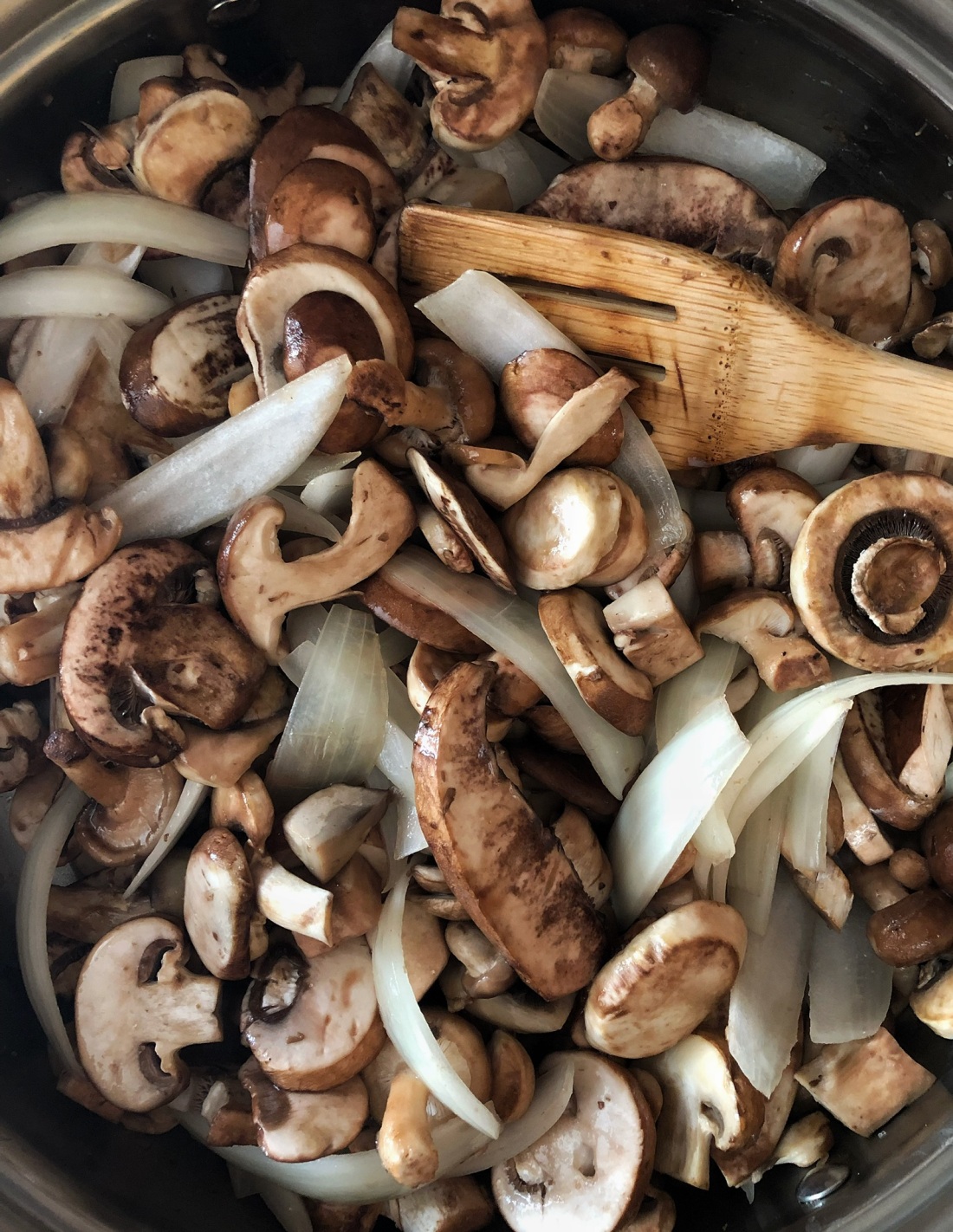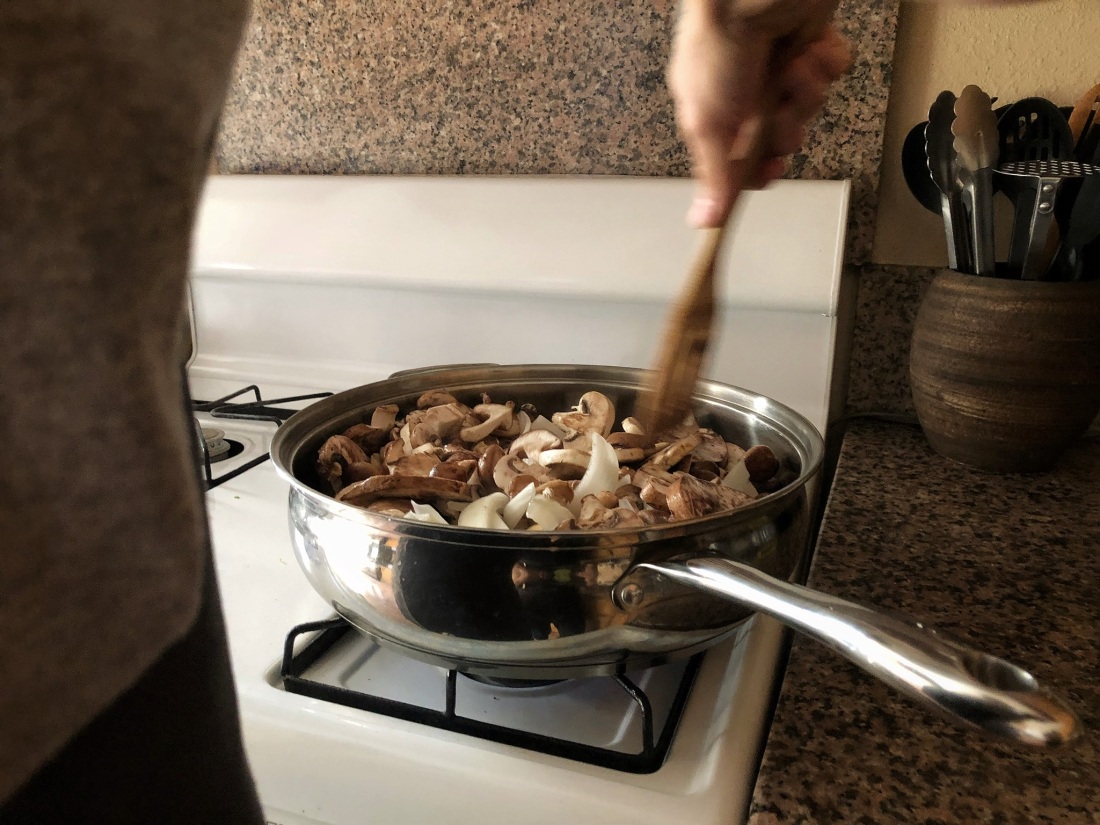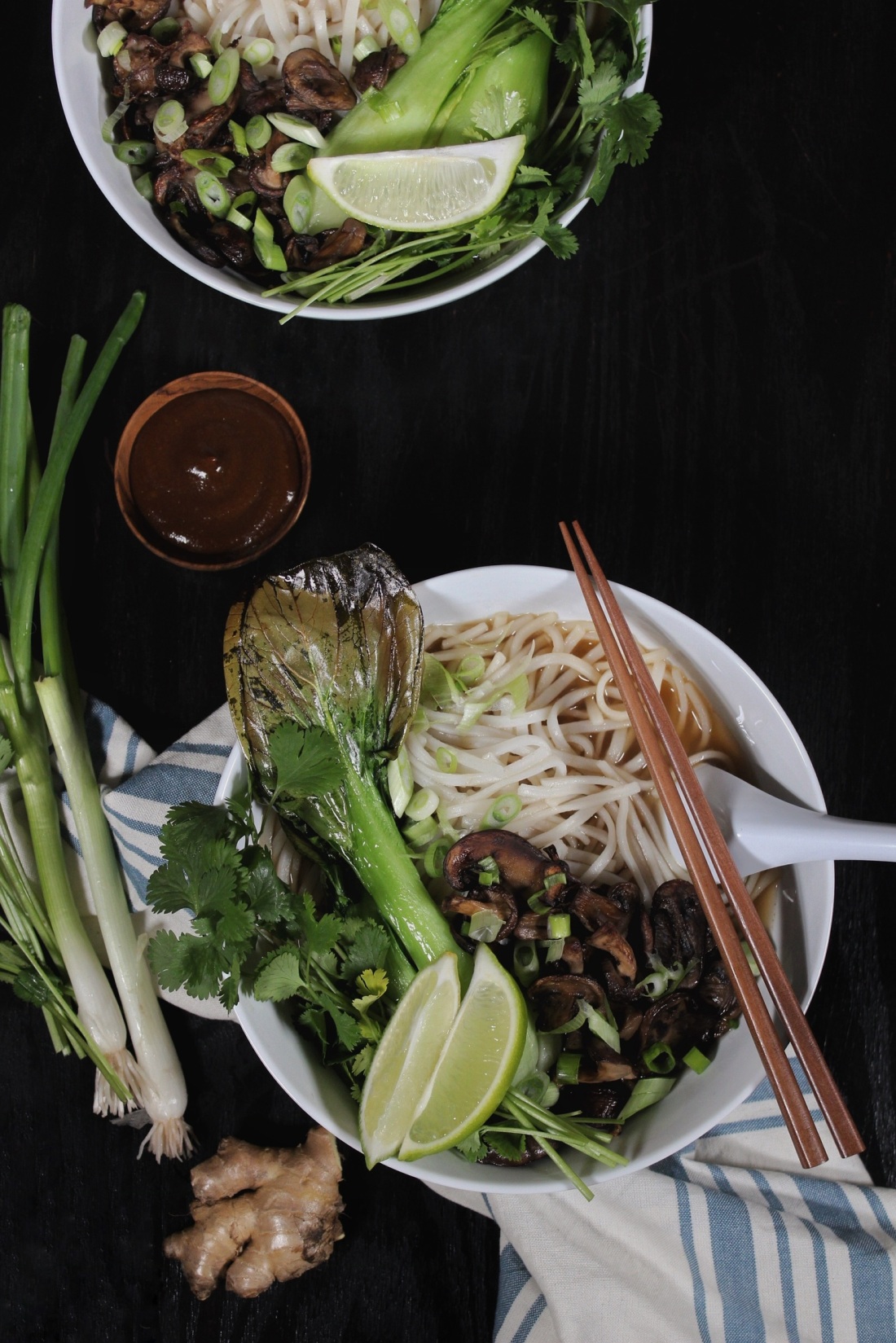Making Pho is as much a tradition as the culture that founded it is. In a lot of ways, Pho reflects Vietnamese culture. The process takes patience, as ample amounts of time is needed to construct its broth – this reflects Vietnamese peoples joy in taking time with everything they do. It’s made in large batches, designed to be shared with a whole family – much like Vietnam’s family centric culture. Eating it is like a party: there’s cilantro on a plate, lime “over there,” and hoisin & sriracha sauce being passed around – Vietnamese people love an excuse to get together and share a feast. Its flavors are fun with a soulful undertone – much like how Vietnamese people’s goofy humor intertwines with a blistering connection to the supernatural.

For all these reasons and more, Pho has sort of become a sacred food (for me at least). It’s one of those things one only orders at a restaurant, because all that time and meticulous crafting is best left for “professionals.” However, this is a food that originates from the home and is still most appreciated when Grandma makes it. Thus, it’s about time to drop the scared veil that I’ve allowed to prevent me from making Pho in my own home.

Traditionally, Pho broth is made by extracting every gram of flavor out of marrow-rich beef bones by carefully simmering it for a minimum of 8 hours – often much more time is needed. This is good news for us, however, because it doesn’t take nearly that long to extract all the goodness out of vegetables. Speaking of veggies, the best base for vegan pho broth (or “Pho Chay” in Vietnamese) is mushrooms, as they contribute a deep, soulful body and a rich, deep brown color that’s akin to beef broth. And – like beef – the mushrooms that are used to make the broth can be used for their chewy texture in the final dish.

As far as noodles go, you’ll want to stick with thin rice noodles, which can be labeled as:
- Pad Thai Noodles
- Rice Sticks
- Banh Pho
- Vermicelli
Unfortunately, no two noodle company is the same and we ended up with noodles that were denser, heavier, and more tender than traditional pho noodles. For the best results, choose noodles that are elastic when cooked, lightly chewy, and almost see-through. Looking back on it, I see where we went wrong: we bought our rice noodles from an American supermarket. I know, that sounds like some hipster gibberish, but you’re likely to find more Pho appropriate noodles from an Asian market.
Homemade Pho isn’t as scary as I thought it to be, however, it is a half-day long affair that requires patience, a meticulous hand, and thoughtful approach. That being said, it’s totally worth it, as this is damn near the best Pho Chay I’ve ever had.

By the way, don’t blow off the toppings as “excess condiments” – they’re as much an integral part of Pho as the broth is. One of which toppings includes hoisin sauce – a very salty, thick & sweet sauce found at most Vietnamese restaurants – which is added to Pho at the table. Now, normally hoisin sauce has A LOT – and I do mean A TON – of fillers, such as caramel color, food coloring, and some funky preservatives. To get around this, Kim and I made our own hoisin sauce from dates back in June of 2017, which contains less than 10 ingredients.
Now, I know what you’re thinking: “but dates have sugar in them.” YES, OKAY, DATES DO HAVE SUGAR IN THEM. Buuttt, for the amount of hoisin sauce needed per bowl, the sugar content is negligible (under 10 g), and it’s way healthier than any hoisin sauce out there on the market. So, for Pho’s sake, don’t skimp on the sauce.
All in all, this family-style Pho is soulful, rich in umami flavors, and complex. If you like what your taste buds are tellin’ ya, leave behind a nice rating, share your thoughts with us in the comments, or show us your creations by tagging @noeggsorham on Instagram.
Cheers!
Kim & Ryan

Pho Chay (Vegan Pho)
Homemade, spiced mushroom broth meets tender vermicelli, roasted baby bok choy, and chewy mushrooms. Top with date hoisin sauce, sliced green onions, lime wedges, & whole stems of fresh cilantro.
Ingredients
Broth
- 2 lb assorted mushrooms (we used crimini, portobello, shiitake, & white)
- 1 large yellow onion, cut into wedges
- 1 fuji apple, cut into quarters
- 2 thumbs of ginger (about 3 inches long), thinly sliced
- 2 tbsp unrefined sesame oil
- 3 star anise
- 1 3-inch cinnamon stick
- 4 whole cloves
- 1/2 tsp white peppercorns
- 7 g dried seaweed*
- 2 1/2 tsp salt, divided
- 1 gallon (16 cups) clean water
Serving (for 3 – double to serve 6)
- 14 oz vermicelli (thin rice noodles)
- 2 baby bok choy, cut in half
- mushrooms from after making the broth
- drizzle of unrefined sesame oil
- pinch of salt
- handfuls of fresh cilantro
- thinly sliced green onions (scallions)
- 1 lime, cut into wedges
- date hoisin sauce
Directions
- Rinse your mushrooms thoroughly. Cut them into bite-sized slices & pieces.
- Heat a very large soup pot over high heat. Once hot, add in sesame oil, all of the mushrooms, and 2 tsp salt. Cook – stirring occasionally – until the mushrooms have greatly decreased in size and have moderately caramelized.
- Note: because they hold a lot of moisture, the pot will likely fill up with water before they start to caramelize. Just continue to boil them down until its all gone; up to 20 minutes in total. Alternatively, you can cook the mushrooms in two separate batches.
- While the mushrooms cook, heat a small pan over medium-high heat. Once hot, add in cinnamon stick, star anise, white pepper, & cloves. Toast – stirring frequently – until they’re aromatic; 3-4 minutes. Set aside.
- When the mushrooms have browned, deglaze the pot by adding 2 c of water and stirring vigorously to unstick any stuck on goodness.
- Add the remaining water, toasted spices, and all remaining broth ingredients to the pot. Cover with a lid and bring to a boil over high heat.
- Drop the heat to medium-low and keep at a bare simmer for 1 hour.
- After that time, carefully pour out the broth into a fine colander set atop a bowl or pot large enough to hold all of the broth. Save the strained mushrooms.
- Transfer back into original pot & bring to a boil over high heat. Drop heat to medium-low and simmer for 10 minutes, uncovered. Your broth is now complete – hooray! Kill the heat and cover until the rest is prepared.
- Pre-heat oven to 450° F. Place halved baby bok choy on a baking sheet and lightly drizzle with sesame oil and a pinch of salt. To a separate baking sheet, add several handfuls of leftover mushrooms and also lightly drizzle with sesame oil and salt.
- Place both sheets in prepped oven. Cook bok choy until lightly charred yet firm – about 6 minutes – and cook mushrooms until they’re chewy and lightly browned – about 10 minutes.
- Cook rice noodles according to packaging instructions. Drain into a colander, thoroughly rinse with cold water to stop the cooking, then rinse with hot water just before serving to remove excess starch.
- To serve, place a large amount of rice noodles in an empty bowl, ladle in plenty of broth, and top with roasted veggies & scallions. At the table, serve with hoisin sauce, fresh cilantro, and lime for everyone to add-in as they please.
- Store leftover broth in an airtight container for up to 5 days. Store any leftover veggies or noodles in a separate air tight container for up to 3 days. To reheat broth, bring to a boil in a pot over medium-high heat.
*It’s difficult to measure out seaweed via volume, but – if you don’t have a scale – use a small handful of wakame seaweed or two sheets of raw nori.

Looks nice and tasty :)
LikeLike
I sooooo wanna try this
LikeLike